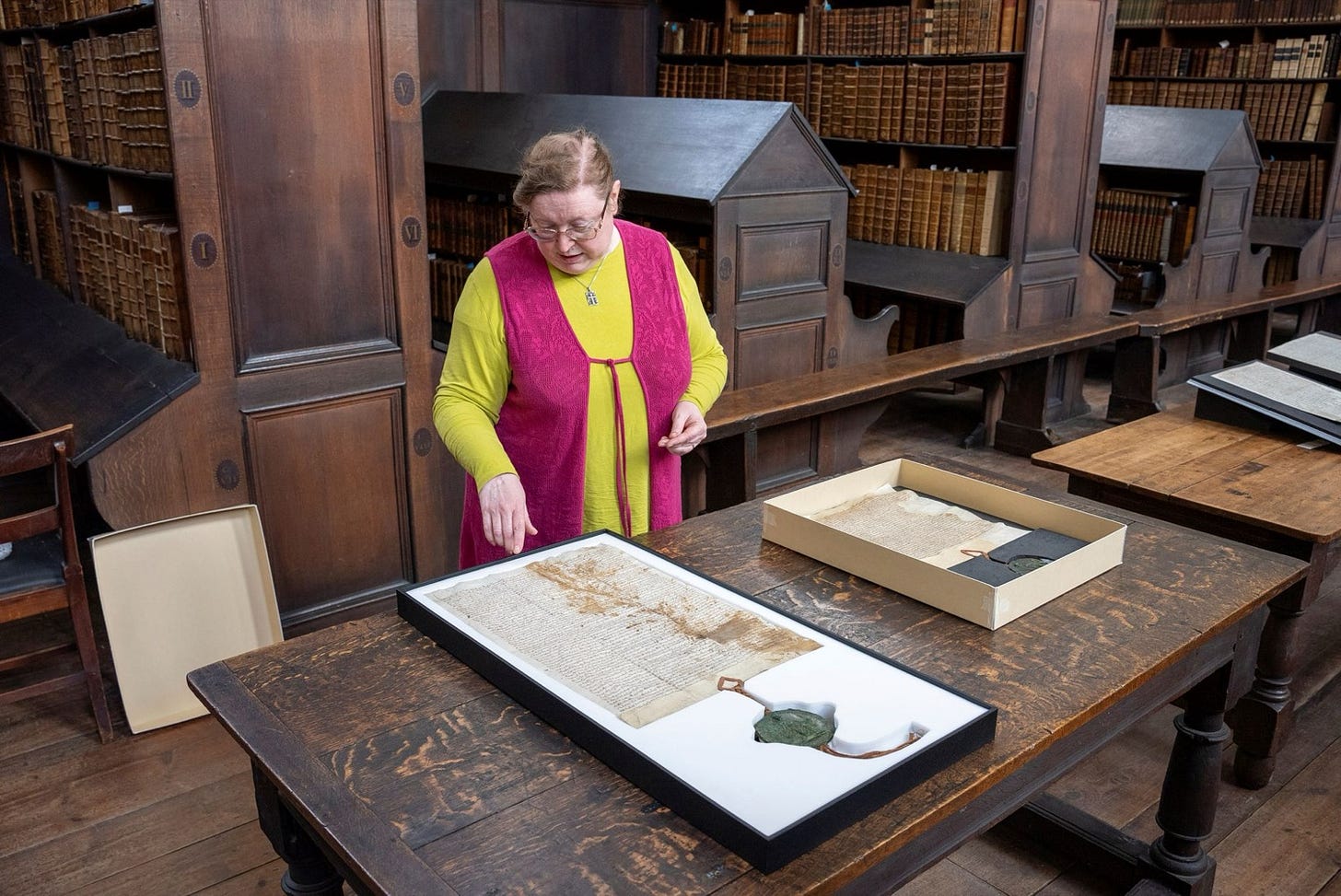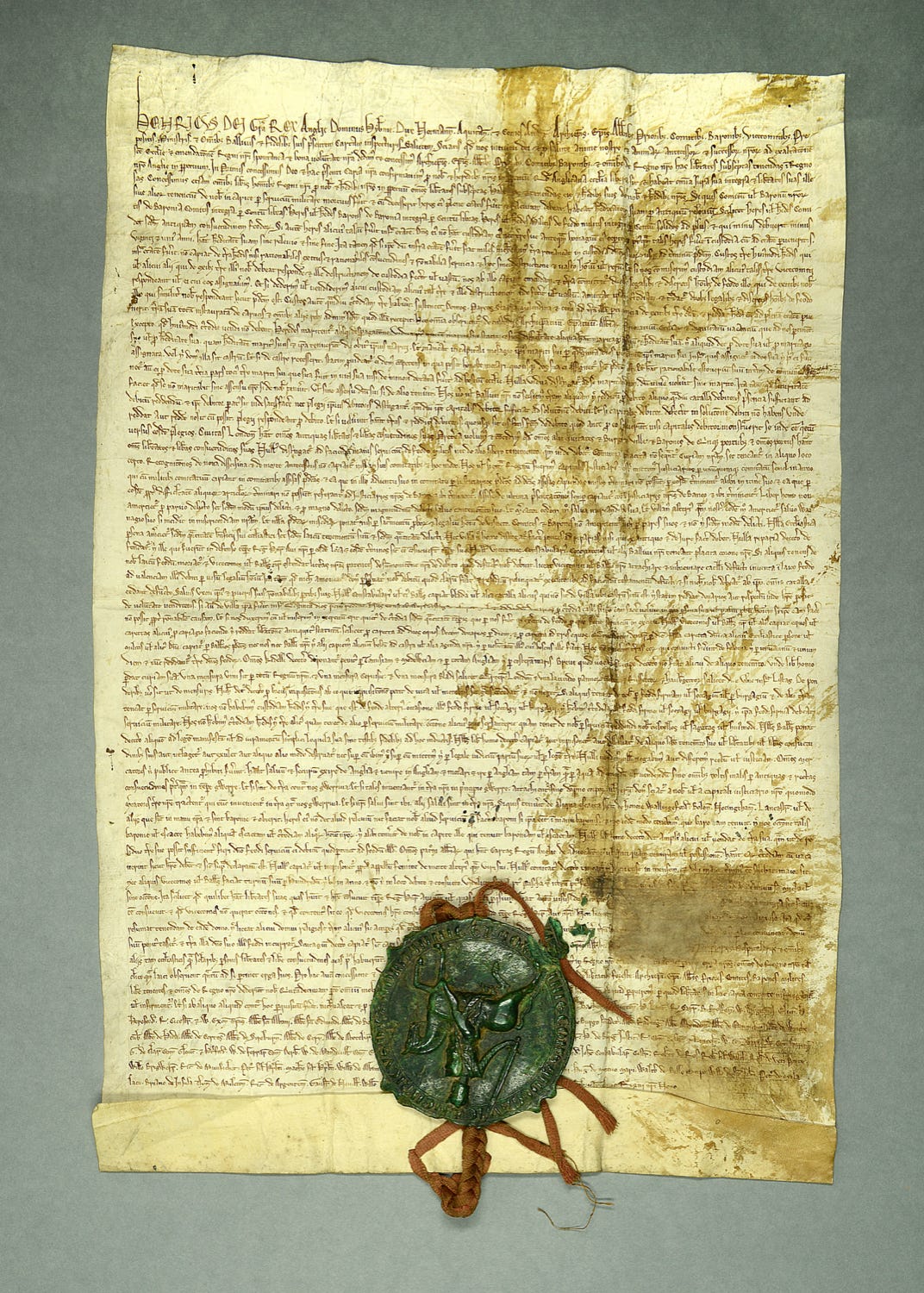When caffeine met history: the Magna Carta mishap
Coffee break catastrophe goes on show. Tony Henderson reports.
Happily, it’s unlikely that any of our displays of clumsiness or slip-ups will go down in history.
But that is not the case for unfortunate physician Christopher Hunter, whose accident with an ink bottle has been on show to thousands of visitors to Durham Cathedral.
In the cathedral’s current Magna Carta display, a brown stain can be seen tarnishing the right-hand margin of the definitive 1225 charter.
When Henry III came of age in 1225, he reissued both Magna Carta and the Forest Charter under his own seal.
Witnessed by 65 bishops, earls and barons, this version became the definitive Magna Carta. It was never reissued, only reaffirmed by later monarchs. Only four copies survive - and Durham’s is the only one to bear the mark of an 18th-century coffee break.
Christopher Hunter (1675–1757) was a physician and antiquarian who practised medicine first in Stockton and then in Durham. He was known for both his teetotal habits and astonishing caffeine intake, reportedly drinking up to 24 cups of coffee a day.
It is believed that the coffee caused his hand to send an ink bottle tumbling onto the Magna Carta’s right margin.
Hunter never returned to Durham’s library. It is thought that his permission to handle any manuscripts was revoked.
That ink stain is now sealed behind modern glass in a climate-controlled case.
“Every time I show visitors the stain, their eyes light up,” said Marie-Therese, collections and exhibitions officer at Durham Cathedral.
“It sparks curiosity: Why is it there? Who was Christopher Hunter? Suddenly Magna Carta isn’t just a distant political landmark but a document that shares our frailties.”
Today, Durham Cathedral’s conservation team insists that all researchers work only with pencils and wear gloves when handling originals.
“Pens and open ink bottles are banned. That single spill revolutionised our approach. We treat every document as if it might encounter its own Christopher Hunter,” said Marie-Therese.
During the Magna Carta display, the cathedral must maintain optimum light, humidity and temperature levels in their protective cases. They use LED lighting, as ultraviolet rays can cause the ink to fade.
Humidity is maintained at 50%. Too high, and mould could grow; too dry, and the parchment could shrink, warp or crack. A stable temperature is also important to ensure the documents don’t break.
When not on display, the documents are kept in complete darkness with closely controlled temperature and humidity.
Visitors to the Magna Carta & The North exhibition can stand within inches of the parchment, trace its Gothic script and spot the brown blemish. The exhibition continues until November 2.
For details visit: www.durhamcathedral.co.uk/magnacarta




